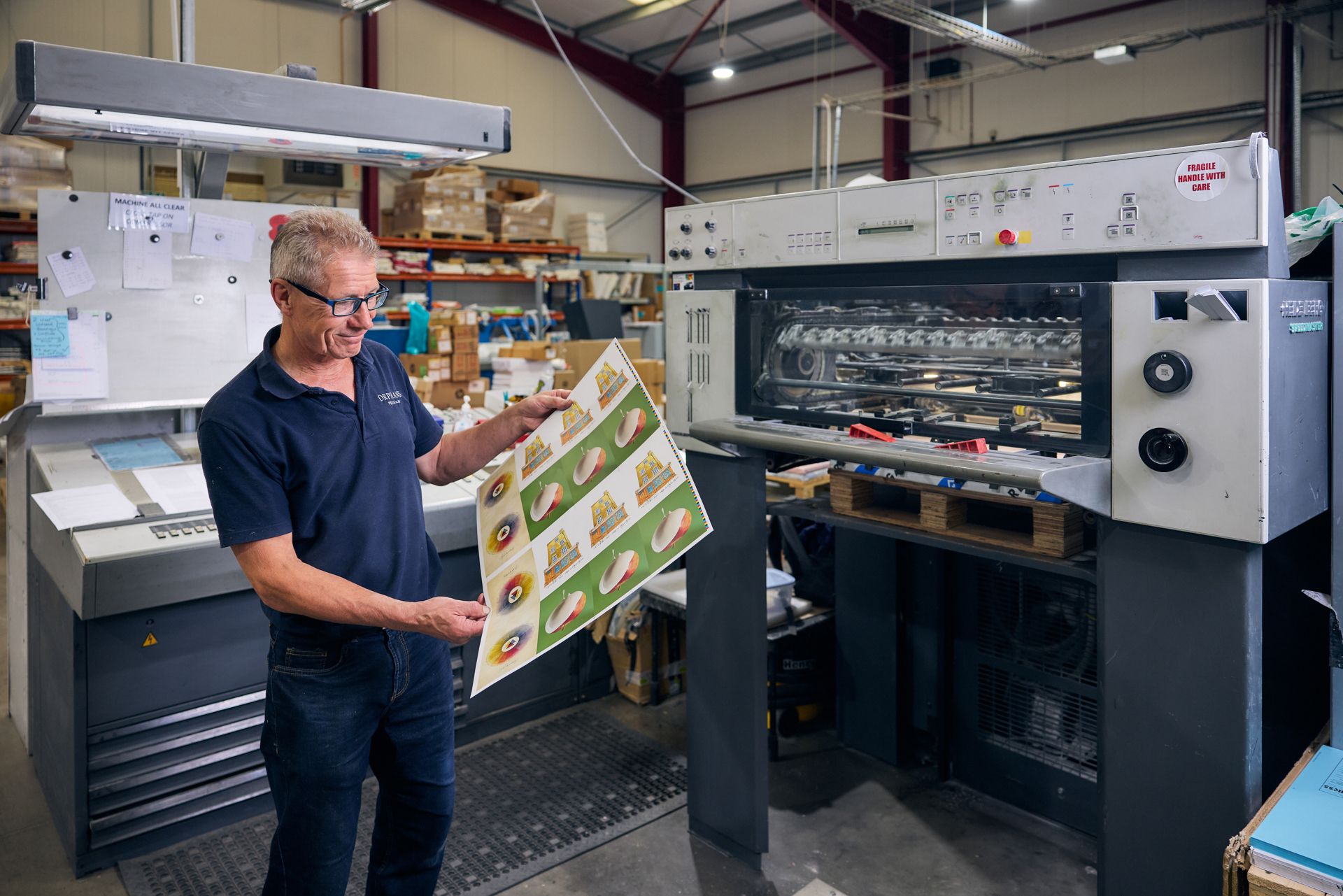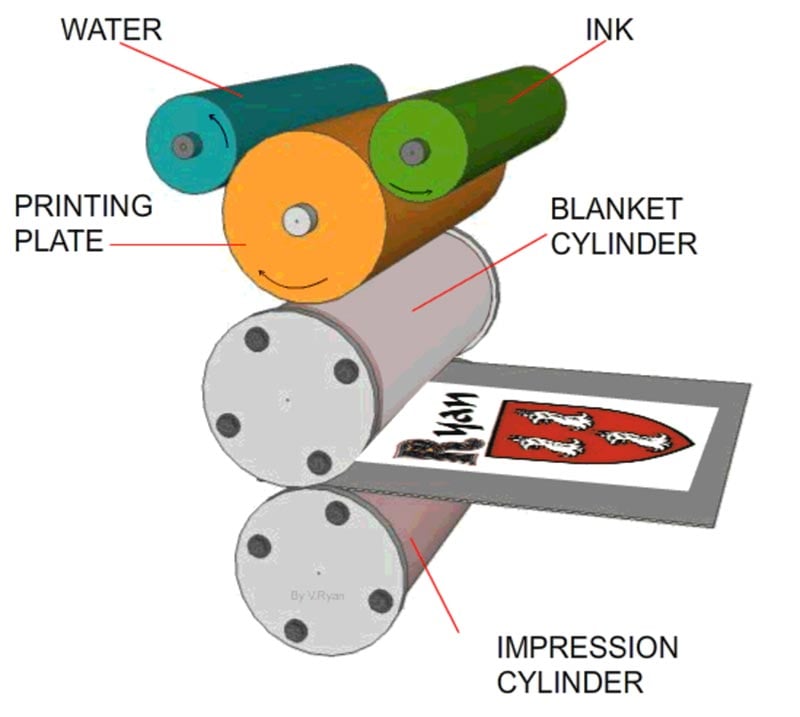A Comprehensive Guide to Understanding Litho Printing Strategies
The world of litho printing, a technique stemming from the late 18th century, is an interesting blend of history, art, scientific research and innovation. This comprehensive overview will untangle the complexities of this printing method, from the make-up of litho inks to the difficulties faced in modern applications. As we venture right into the complexities of lithography, the significance of automation and sustainability in guaranteeing its future significance becomes increasingly clear. Stick with us as we trip into the fascinating world of litho printing.
The Historic Evolution of Litho Printing
The historical trajectory of litho printing, a pivotal advancement in the realm of interaction, is a captivating story of human resourcefulness. Birthed in the late 18th century by Alois Senefelder, this strategy was initially an affordable method of publishing theatrical works. Lithography, derived from the Greek words for 'stone' and 'to compose', used a smooth rock surface area to move photos onto paper. The procedure advanced with the advent of the rotating press, which greatly enhanced efficiency (litho printing). In the 20th century, the development of balanced out lithography reinvented the market, permitting automation of high-quality prints. Each stage of litho printing's evolution showcases humanity's ruthless search of efficiency and high quality in visual communication.
Decoding the Science Behind Litho Printing Inks
Progressing in the expedition of litho printing strategies, the focus now changes to the scientific research behind litho printing inks. The structure of these inks, their drying out process, and shade mixing strategies develop the foundation of this complicated art form. Comprehending these elements is important to understanding the craft and achieving the desired print results.
Make-up of Litho Inks
In lithographic printing, the basic duty of litho inks can not be overemphasized. The structure of litho inks differs relying on its function, however generally, they include two primary parts - pigments and cars. Pigments, the color-providing elements, are carefully ground bits suspended in the car, a liquid that lugs the pigment onto the printing surface area. The automobile is a complicated blend of solvents, materials, and oils, which affect the ink's drying out time, adhesion, and gloss. Additionally, numerous ingredients exist to boost specific residential properties like flow, drying out, and resistance to environmental impacts. Each part plays an important part in the final print's high quality, making the specific formulation of litho inks a detailed scientific research.
Ink Drying Process
From the structure of litho inks, interest turns to the interesting procedure of ink drying. Two primary approaches are made use of in litho printing: oxidative drying out and absorption. Absorption, on the other hand, involves the ink permeating right into the paper fibers, which is a much faster process but can lead to less vivid shades.
Color Combining Techniques
While the drying process plays a vital duty in litho printing, the scientific research of color blending strategies holds equal significance. This is an intricate process that includes the cautious mixing of primaries: cyan, magenta, and yellow, in varying proportions to accomplish a vast array of tones. The enhancement of black ink, referred to as 'vital', helps in controling the strength and deepness of the shades. The science behind litho printing inks also takes into account the openness of the ink, which affects exactly how colors overlay and mix. To accomplish a reliable shade mix, print experts have to also comprehend the details of ink habits, shade concept, and the physical residential properties of the substrate on which the ink is applied.
The Art and Design Aspects in Litho Printing
Litho printing breathes life right into art and design via its unique components. Litho printing fits a variety of colors, making it possible for artists to develop vivid and vibrant prints. This combination of precision and versatility makes litho printing a recommended choice for lots of musicians and designers.
Modern Applications of Litho Printing Strategies
Litho printing techniques have actually discovered extensive usage in the contemporary commercial market. Its influence and relevance remain to expand with the introduction of brand-new innovations and technologies in the field. This area will certainly discover these modern applications and the transformative function they play in the printing sector.
Industrial Litho Printing Makes Use Of
In today's digital age, one might question the importance of typical printing methods. Yet, litho printing continues to be a vital part of the industrial sector. High-volume printing tasks, such as the production of books, newspapers, and product packaging, rely upon litho printing for its ability to supply remarkable photo quality and price effectiveness. The process, which includes transferring an inked photo from a plate onto a rubber covering and then to the printing surface, provides unequaled uniformity. This makes it optimal for jobs calling for a large print run. Litho printing also offers Bonuses a broad color range, premium to that of electronic printing. This makes it the best choice for projects that demand dynamic, high-grade color reproduction.
Advancements in Litho Printing
Pressing the boundaries of typical strategies, contemporary improvements have fueled a you could check here host of technologies in litho printing. One popular growth is electronic litho printing, which integrates the merits of digital modern technology with litho's top notch output. These advancements highlight the long-lasting importance of litho printing in the modern world.
Discovering the Refine of Litho Printing: Step by Step

Difficulties and Solutions in Contemporary Litho Printing

Regardless of the accuracy and custom that litho printing proudly maintains, it is not without its collection of modern obstacles. Digital litho printing allows for affordable short runs and very easy personalization, dealing with the problem of variable data. Hence, while there are difficulties, the litho printing market is proactively adapting to satisfy them head-on, ensuring its importance in the future.
Conclusion
In final thought, litho printing, with its rich background and scientific details, holds a significant location in the print industry. The future of litho printing pivots on its ability to adjust to these changing needs, affirming its long-lasting value in an evolving market.
